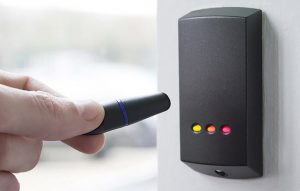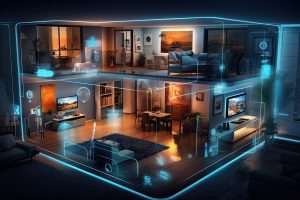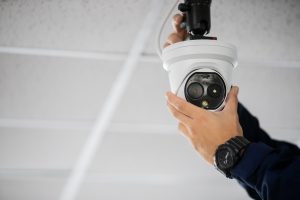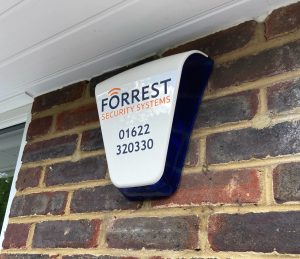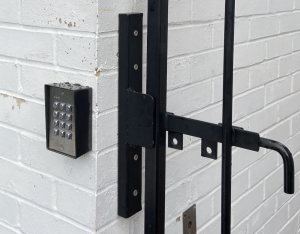Intruder detection is the backbone of modern security systems, for homes and businesses. Over the years these have moved from basic manual methods to advanced automated systems.
Technology is still advancing and making it easier for property owners to secure their premises.
As the threats evolve so must we and technology is key to this evolution.
This blog will look at the journey of intruder detection technologies from the old basic solutions to the smart connected systems of today.
From the past to the present how modern systems work and what role they play in keeping us safe.
Early Intruder Detection
Before technology, the methods of intruder detection were basic but effective. People relied on physical barriers like locked doors, gates and heavy-duty windows to secure their homes and businesses.
Watchmen, guard dogs and neighbours keeping an eye out were also common forms of protection. But these methods while reliable to a point were limited in scope and required human intervention.
The first big leap came with the introduction of mechanical alarms designed to alert property owners to potential breaches. These devices used simple mechanical triggers like tripwires or door contacts to trigger bells or horns when an intruder was detected.
While these systems were a step up from nothing, they were limited and lacked the sophistication and reliability we expect from modern security solutions. Their limitations were evident and it was clear more innovation was needed to expand the range and effectiveness of intruder detection.
Electronic Security Systems
In the mid-20th century, the introduction of electronic security systems was a major milestone. The first wired alarm systems allowed for greater accuracy and reliability in detecting intruders. These systems used a network of wires connected to sensors placed around the property.
When a sensor was triggered it sent an electrical signal to the alarm panel which then triggered the alert. This reduced the need for human monitoring and made the process more efficient.
At the same time motion detectors were being introduced into security systems. Early motion detectors used passive infrared (PIR) technology to detect the heat signature of a person’s body, a more automated form of detection.
These devices could cover a wider area than their mechanical counterparts and were harder for intruders to circumvent. With the rise of wired alarms telephone-based alarm monitoring also became popular, so homeowners could be notified of a breach even when they were not on the premises.
This was the start of the electronic security era which would only get more advanced over time.
The Digital Age of Intruder Detection
The digital revolution of the late 20th century was a game-changer for intruder detection technologies. The move from analogue to digital allowed for more complex processing and multiple technologies to be integrated.
Digital systems were more accurate and flexible and could use a range of sensors including motion detectors, glass break detectors and window vibration sensors all connected to a central alarm panel. This meant more coverage and better monitoring.
One of the biggest developments during this time was the integration of closed-circuit television (CCTV) with alarm systems. CCTV cameras became a key tool for real time monitoring, so property owners could see the threat and respond accordingly.
These systems could be connected to digital recorders so footage could be stored for later analysis or as evidence. By the year 2000 CCTV was a standard part of every security setup, a major milestone in the evolution of intruder detection.
Smart Technology and Intruder Detection
Smart technology in the 21st century has changed the way intruder detection systems work. Smart home security systems powered by the Internet of Things (IoT) are becoming more and more popular, giving property owners more control and flexibility.
These systems can be accessed and monitored remotely via smartphones and other devices, for real-time alerts, remote arming and disarming and even interaction with other smart home devices like lighting and thermostats. Wireless alarm systems which eliminated the need for messy wiring have made these systems even more convenient and scalable.
Artificial intelligence (AI) and machine learning have also changed the game for modern intruder detection systems. AI-powered CCTV cameras now have facial recognition which can tell the difference between an authorised person and an intruder. Behavioural analysis can detect unusual patterns of movement like loitering or breaking and speed up response times.
These intelligent systems can learn and adapt to the environment and provide a much higher level of security and valuable insights into vulnerabilities.
The Future of Intruder Detection
The future of intruder detection looks even brighter with emerging trends pointing to more advanced solutions. One area of growth is biometric security, fingerprint scanning, retina recognition and voice identification.
These provide a higher level of authentication and make it harder for intruders to get into restricted areas. Predictive analytics will also play a bigger role in identifying threats before they happen. By analysing behaviour patterns and environmental data, these systems can predict a security breach and alert the owner to take preventative action.
Another area of interest is the use of drones and robotics in security monitoring. Drones with cameras and sensors could patrol large properties or areas that are hard to get to and provide real-time feedback to the security team.
Robots could be deployed to detect intruders or provide live surveillance. As cyber threats continue to rise the integration of cyber security into intruder detection systems will become more and more important.
Protecting these systems from hacking and other digital threats will be key to keeping modern security infrastructure secure.
Summary
The evolution of intruder detection has been incredible, with each new development building on the last. From the old mechanical alarms to the AI-powered systems of today, these have got better and better.
The integration of smart technology and digital innovation has brought a new era of security where property owners can be connected and in control all the time.
Looking forward the future of intruder detection seems to be about more automation, more intelligence and more integration with the rest of our lives. As technology advances so will security systems and we’ll be even more protected from threats.
Stay informed about the latest trends and developments in security technology and you’ll be safe at home and in business.

